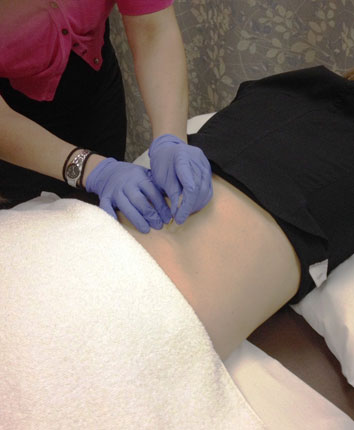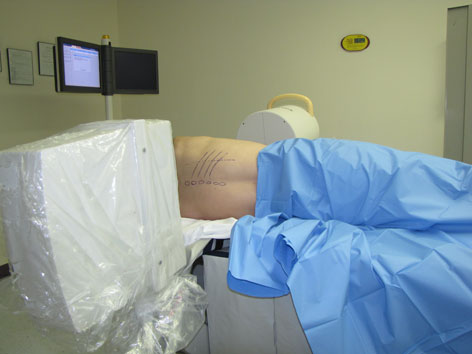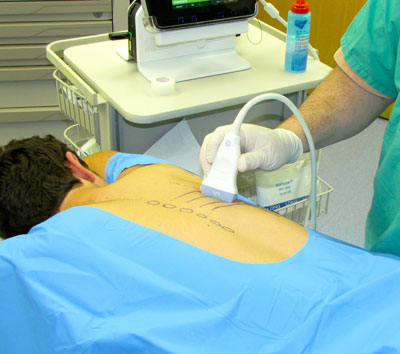Lacey Romero
Lacey joined our office team in 2014. She will be handling scheduling and administrative duties. She enjoys fishing, roadtrips, touring historical sites and is a member of the Timberlake Baptist Church.
Spectrum Medical does not have any COVID-19 vaccines available at this time.
Please contact your local health department for further information.
vaccinate.virginia.gov
Click here for our current COVID-19 guidelines.
Lacey joined our office team in 2014. She will be handling scheduling and administrative duties. She enjoys fishing, roadtrips, touring historical sites and is a member of the Timberlake Baptist Church.
 The intent of dry needling is compatible with manual therapy techniques to improve muscle function, induce relaxation and decreased pain as defined in the Guide to Physical Therapy Practice. This technique requires a written order from a physician at our facility.
The intent of dry needling is compatible with manual therapy techniques to improve muscle function, induce relaxation and decreased pain as defined in the Guide to Physical Therapy Practice. This technique requires a written order from a physician at our facility.
This technique works in combination of a physical assessment, exercises, and hands-on mobilizations. This will require that each patient is an active participant in their own treatments. Dry needling involves placing a small needle into the muscle at the trigger point which is typically in an area which the muscle is tight and may be tender with the intent of causing the muscle to contract and then release, improving flexibility of the muscle and therefore decreasing symptoms.
There are times when Functional Dry Needling is contraindicated or not recommended:
There is no specific pre-set number of treatments for patients but typically positive results are apparent within 3-5 treatment sessions but can vary depending on the cause and duration of the symptoms, and overall health of the patient. However if at any point the patient no longer wishes to continue with dry needling therapy, this treatment will be removed from their physical therapy treatment plan.
A trigger point is a hyperirritable spot in the muscle that is associated with a hypersensitive palpable nodule in a taut band. The spot is tender when pressed and can give rise to characteristic referred pain and tenderness, motor dysfunction and autonomic phenomena (Travell).
There is a difference between the two treatments styles. Our Therapist only perform dry needling techniques. Dry Needling is not an entry level skill, it should be administered by physical therapists who have taken the necessary coursework to perform this technique.

Kyphoplasty – Dr. Eduardo M. Fraifeld explains this minimally-invasive pain management procedure used to treat compression fractures of the spine.



 Our treatment goals:
Our treatment goals:
You are the only one who can decide which treatment is best for you. It is important that you recognize that you have a responsibility to participate in, and take ownership of, any decisions involving your health care. You will be asked to make the final decision about what is best for you, so ask questions about anything you do not understand.
Your family and close friends are an important part of the collaborative process. We encourage you to include them in any education sessions we provide concerning your condition. If you choose to have surgery, we will make every effort to keep family members informed of your progress and to involve them in your recovery process.
Deciding which treatment option is best for you involves weighing the risks and benefits associated with each option. If you eventually choose to have surgery, your physical condition and your mental attitude will determine your body’s ability to heal. You must approach your surgery with confidence, a positive mental attitude and a thorough understanding of the anticipated outcome. You should have realistic goals — and be willing to work steadily to achieve those goals.
Angie has been working at DOC Rehabilitation since 2008. She helps with patient scheduling and billing. Angie is a graduate from Danville Community College with Associates Degree.
Diana has come back to our front office team at DOC Rehab. She has been employed since 2012 doing check-in and patient scheduling. Diana has experience in sales, customer service, and management. She graduated from the University of Tennessee at Martin with a BSBA with a major in management. Diana enjoys spending time with her friends and family while being a member of Faith Memorial Baptist Church.
Martha is the Rehabilitation Office Manager. She has been with DOC Rehabilitation since 2007. Martha has been working in billing and insurance for over 30 years.

Brittany is a Licensed Physical Therapist Assistant. She graduated from Liberty University with a BS in Exercise Science. She continued her education at Jefferson College of Health Sciences to earn her Associates Degree as a PTA. Her focus is outpatient therapy. Brittany enjoys spending time with family and outdoor activities such as kayaking, hiking, and swimming.